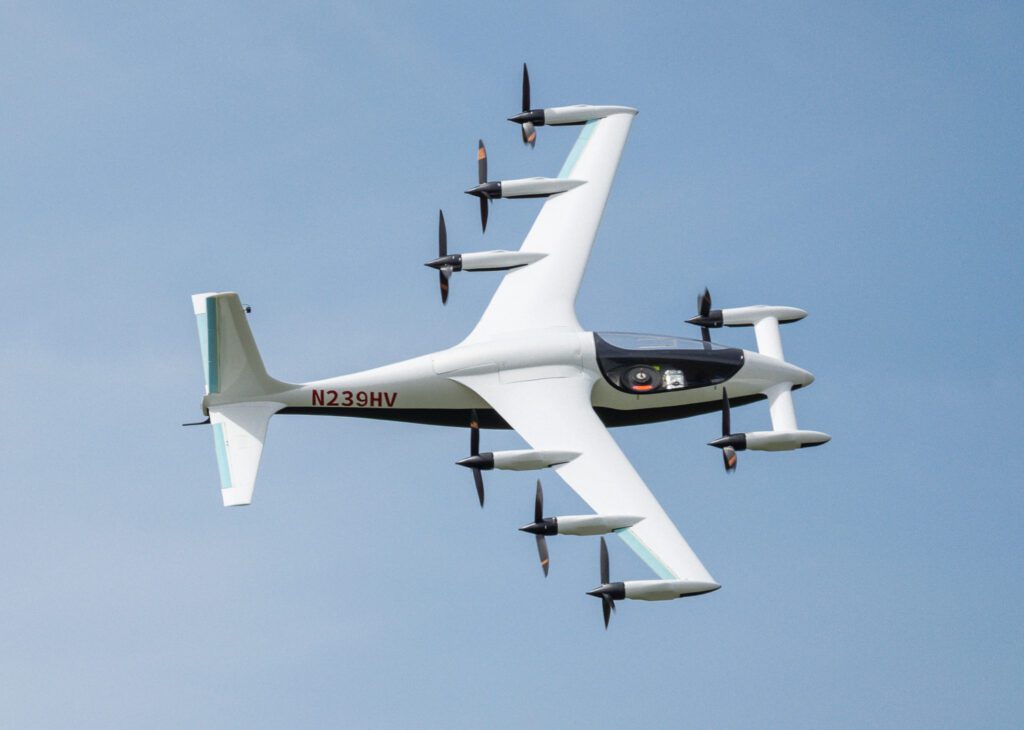
Aurora Flight Sciences joined a NASA University Leadership Initiative to work with UC San Diego in developing a tool to optimize the design of eVTOL aircraft like the one pictured above. (Photo: Kitty Hawk)
Aurora Flight Sciences, a subsidiary of Boeing, joined a NASA project that aims to optimize the engineering process of eVTOL vehicles. Aurora is now collaborating with the University of California San Diego in support of a NASA University Leadership Initiative (ULI). Aurora and UC San Diego will be developing multiple tools, including a large-scale computational design tool to optimize the development process for eVTOL aircraft. This project will conclude in September 2024.
UC San Diego began working on the ULI project, titled “Rapid Development of Urban Air Mobility Vehicle Concepts through Full-Configuration Multidisciplinary Design, Analysis, and Optimization,” in 2021 as the lead organization. Aurora Flight Sciences joins other supporting organizations including Brigham Young University – Provo, San Diego State University, M4 Engineering, and UC California – Davis. NASA created the ULI to address the unique challenges of designing aircraft with vertical take-off and landing capabilities.
Aurora will work with UC San Diego to develop an open-source multidisciplinary design, analysis, and optimization (MDAO) tool that will enable engineers to automate calculations for eVTOL design based on selected parameters.
Boeing acquired Aurora in 2017, and Aurora’s team managed the development of a passenger air vehicle (PAV) prototype that made its first flight in 2019. The eVTOL prototype was designed with eight rotors to achieve vertical lift, and it included a tail rotor for forward flight. Aurora’s team will use its previous expertise in urban air mobility, including development and research for the PAV, to develop and validate the MDAO tool.
Engineers from Aurora will provide key data points—industry insights, existing performance data, etc.—for developing the algorithms that go into the MDAO tool. Once engineers input the parameters of an eVTOL aircraft, like number of passengers, range, and cruising speed, the MDAO tool will calculate the optimal structural design for the aircraft. The tool will also determine the optimal number and shape of rotors as well as the ideal propulsion system size to fit the aircraft’s requirements.
John Hwang, UC San Diego professor of mechanical and aerospace engineering at the Jacobs School of Engineering, is the principal investigator for the NASA ULI contract. “Given a computational model, state-of-the-art design optimization algorithms can efficiently search for the optimal values of up to tens of thousands of design parameters that minimize or maximize some specified objective, such as vehicle operating cost,” Hwang explained in a UC San Diego announcement about the NASA grant.
“We will develop models for all aspects of the aircraft—such as aerodynamics, structures, acoustics, battery, and motor performance—and leverage these optimization algorithms to navigate the most complex and unintuitive aspects of the eVTOL aircraft design problem,” Hwang stated.
The set of simulation and optimization tools that Aurora and UC San Diego develop will be used by researchers for vehicle configuration trade studies related to noise, cost, and safety. This will provide valuable insights to companies as they make decisions about the design of their eVTOL aircraft.